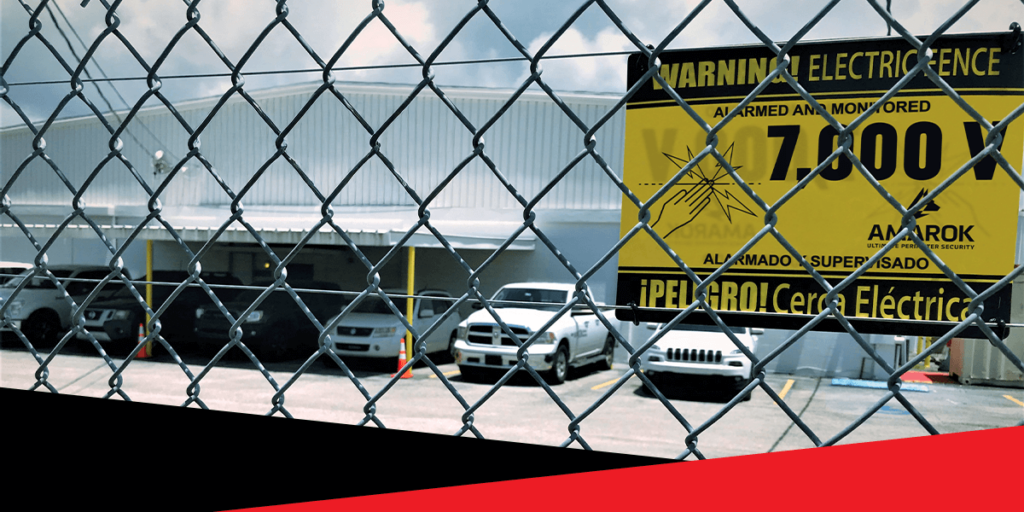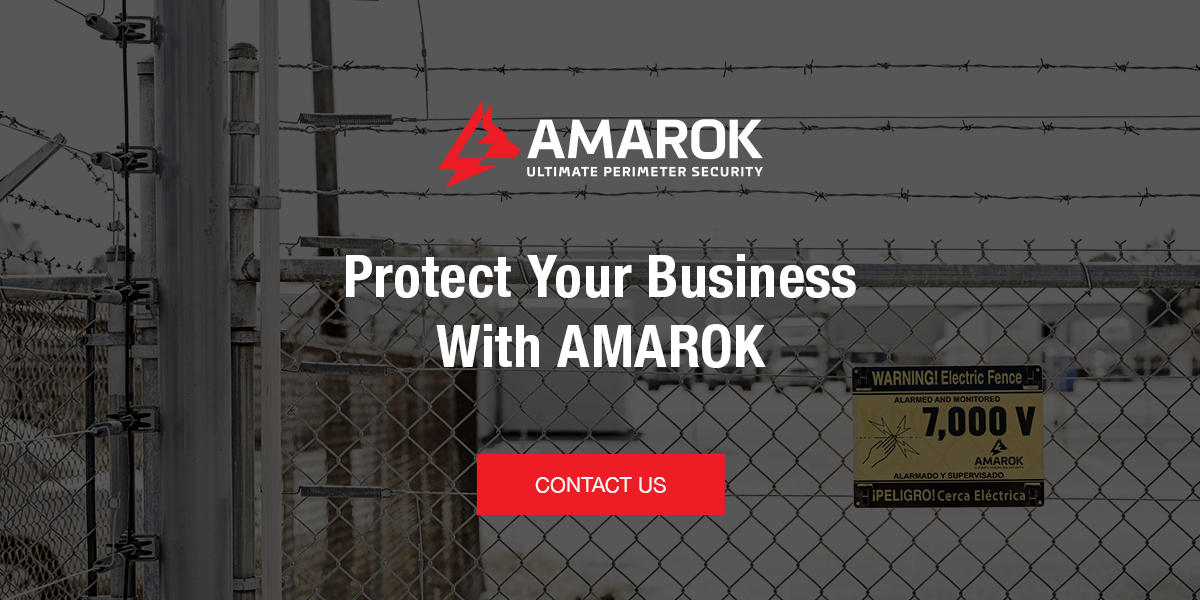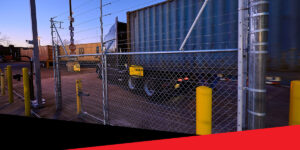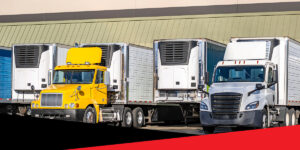When a natural disaster strikes, it can damage infrastructure and create a window of vulnerability for your business. A well-prepared site can weather hazards more securely, minimizing both opportunistic threats and internal vulnerabilities.
Natural disasters test more than your business’s physical infrastructure. They test your preparedness, resilience, and leadership. With the right security approach, you can protect your assets, safeguard personnel, and maintain operational control in even the most unpredictable environments.
How Natural Disasters Impact Property Security
Along with damaging buildings, natural disasters pose a risk to your entire security perimeter. marked the 14th consecutive year with over 10 separate billion-dollar natural disasters in the United States. Here’s how specific natural disasters impact your perimeter security:
- Wildfires: Wildfires destroy perimeter vegetation, compromise fences, and damage sensor wiring, leaving gaps in detection zones. Smoke can also impair camera visibility.
- Flooding: Flooding erodes fences, causes walls to collapse, and washes away perimeter sensors. Waterlogged ground can also weaken fence posts and bollards.
- Hurricanes: Hurricanes and strong winds can rip down fencing, topple gates, and shatter security cameras. Flying debris worsens the risk.
- Earthquakes: Earthquakes, which are common in the central U.S., can shift fences, crack walls, and misalign gate systems. Perimeter cracks create entry points for intruders.
- Landslides: Landslides and mudslides overwhelm barriers with debris, crushing fences, cameras, and lighting systems.
- Hailstorms: Hailstorms are also more common in the central U.S. These storms can break cameras and perimeter lights, reducing monitoring and deterrence.
Property crime spikes after a natural disaster, especially if it results in a power outage. This tendency for crime to increase makes it crucial to be proactive about your perimeter security.
Essential Security Measures to Protect Your Property in a Natural Disaster-Prone Area
When you’re protecting a commercial property in an area prone to natural disasters, you need a strategy that anticipates disruption, minimizes risk, and speeds up recovery. From clearing overgrown vegetation that can become windborne debris or conceal intruders to reinforcing access control, every measure matters.
Pre-Disaster Planning
Secure your property before natural disasters with a full perimeter risk assessment. Consider installing impact-rated fencing, barriers, and reinforced access points to prevent windborne debris or unauthorized entry. Reinforce fencing using steel posts, deep concrete footings, and anti-climb designs to withstand high winds or debris. When you know rough weather is imminent, move critical equipment to secure interior areas and elevate it if there is a flooding risk.
The right perimeter security system comes with its own backup power solution. Your building also needs backup power to help your business resume after an event that triggered a power outage. Secure backup generators within tamper-proof, water-resistant enclosures. You should also ensure that critical data and systems are backed up in case equipment is damaged. Prepare a detailed disaster response plan laying out staff roles, key vendor contacts, and repair priorities. Train your team on emergency procedures, lockdowns, and evacuation routes.
During the Disaster
Monitor weather alerts and follow evacuation orders as the National Weather Service directs. When disaster strikes, automated systems and remote monitoring take the lead to keep you and your employees safe when physical access may be limited. Rely on these essential perimeter security features to monitor and protect your property:
- Remote surveillance: Use your live camera feeds and alert systems to detect attempted breaches or property damage. Remote monitoring allows you to detect incidents without putting staff at risk.
- Access control: Secure your property before evacuating. Activate automated gate locks and freeze or modify digital access permissions to prevent unauthorized entry, especially in case of evacuations.
- Coordinate with emergency services: Keep your lines of communication open. Share site maps and security protocols with first responders if they need to access your property.
Post-Disaster Recovery
When it’s safe, your priority shifts to damage assessment, security stabilization, and phased reactivation. First, conduct a perimeter check. Inspect fencing, gates, and access points for breaches or structural failure. If necessary, you can have portable electric fencing installed for temporary protection. Verify that all perimeter fencing, surveillance cameras, access controls, and communication systems are functional before staff return. Next, cross-check security logs and surveillance footage for unauthorized activity during the disaster window. This footage will help you document potential losses for filing insurance claims.
Use this experience to evaluate and modify your security strategy. Update disaster protocols, identify gaps, and invest in stronger mitigation strategies where needed. Think of the recovery period as more than rebuilding — it is an opportunity for your business to come back stronger.
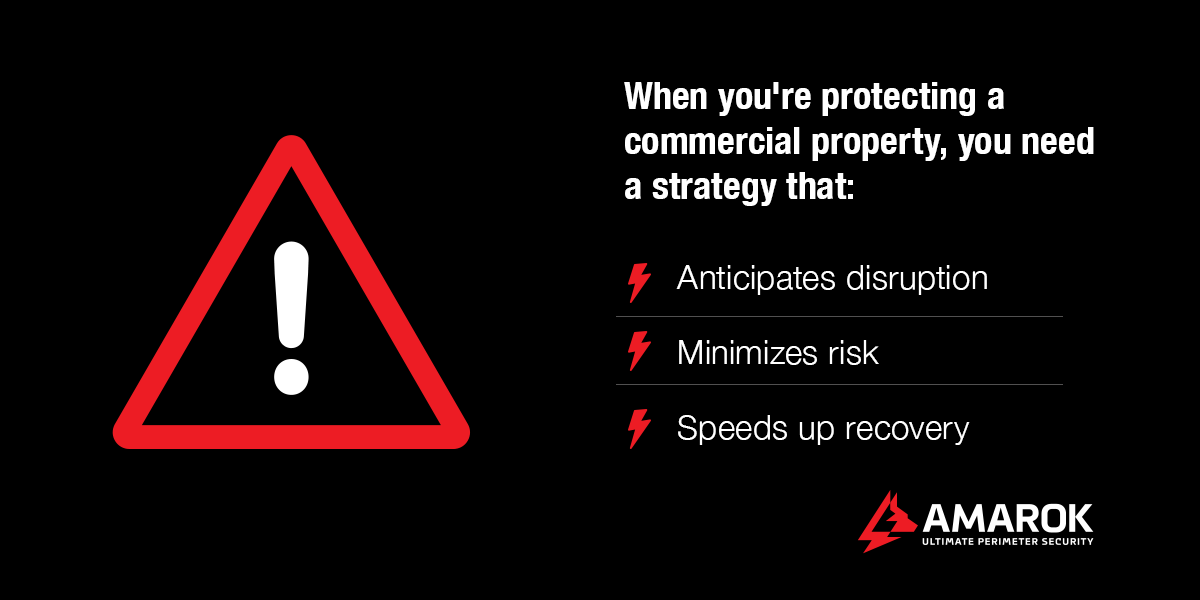
Key Considerations for Perimeter Security in Disaster-Prone Areas
Your perimeter security must do more than deter crime during a natural disaster. It must endure extreme conditions and stay functional when traditional systems fail. When you upgrade your perimeter security, look for these key features:
- Detection and deterrence: Prioritize proactive over reactive solutions. Electric fencing installed behind your existing fence is both a physical and psychological barrier. The electric fence will deliver a safe but memorable shock when a would-be intruder attempts to breach your perimeter. Noticeable signage acts as an additional psychological deterrent, discouraging tampering before it happens.
- Durability and resistance: After a hurricane, a weakened fence line invites trespassers. You need perimeter security with durable, engineered barriers that resist wind, impact, and corrosion. Materials should be rated for specific threats in your region, like reinforced footing in an area prone to flooding.
- Reliable backup power: Natural disasters often mean extended power outages. Choose solar-powered electric fencing to keep your perimeter protected online when the grid fails.
- Maintenance and monitoring: A perimeter security system that includes a dedicated monitoring and maintenance crew ensures swift repairs and regular system health checks. This model reinforces the importance of vendor support and routine inspections as part of your broader disaster-readiness strategy.
Perimeter Security Can Help Secure Businesses in Disaster-Prone Areas
In disaster scenarios, a multi-layered perimeter security approach is crucial. Think of this as an in-depth defense strategy that works even when nobody’s on-site.
Electric Fencing
Electric fencing like The Electric Guard Dog™ Fence remains operational during power outages thanks to solar energy. The fence delivers a safe but memorable 7,000-volt pulsed electric shock when would-be intruders attempt to breach it. You can bolster your proactive security positioning by adding laydown fencing and gate auto-arming to this product.
Select security providers offer vegetation management to remove potential hiding areas near the perimeter and prevent accidental contact with the fence. This service is excellent for businesses tightening perimeter security in areas prone to wildfires, as it accomplishes these goals while also eliminating potential fuel for the flames.
Video Surveillance
During and after a disaster, physical access to your property may be impossible. An integrated video surveillance system offers continuous visibility and cloud-based access, allowing you to:
- Assess real-time conditions
- Guide response efforts
- Provide visual documentation for loss reporting
Cameras housed in weatherproof casings with integrated backup power sources ensure you have uninterrupted operation.
Gate Access Control
When recovery starts, controlling who enters your property becomes just as important as keeping would-be thieves out. With the right Gate Access Control system, you can grant or restrict access remotely, lock down entry points quickly if conditions worsen, and track entry logs for security or compliance purposes.
Protect Your Business With AMAROK
Natural disasters are unpredictable, but your preparedness shouldn’t be. By investing in perimeter hardening, planning, and swift recovery, you protect your property, business continuity, and reputation. Take action now, before the next disaster hits.
At AMAROK, our nationwide network security professionals are available 24/7, 365 days a year to assist you before, during, and after any natural disaster. Our integrated perimeter security solutions are engineered to withstand the physical challenges of natural disasters and support your operational continuity. With a manageable monthly service fee, you get turnkey perimeter security installation at zero upfront costs, which includes maintenance and insurance. Thanks to our 360-degree protection, 99% of our customers experience no theft after installation.
Schedule your free threat assessment today and secure your commercial property.
